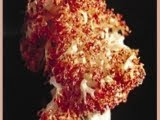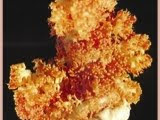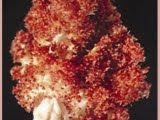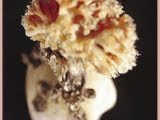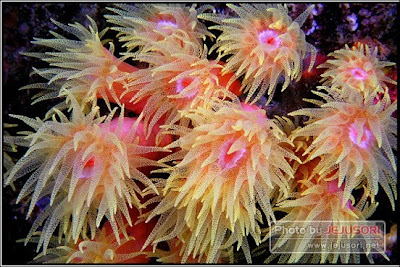Re-Post from the No base Stories of Korea
__For the original Korean article including maps/images(click HERE)
* English subtitles were added by arbitrary to the original images.
* The last 13 images were added by arbitrary for readers’ easier understanding.
________________________________________________________
The below is a rough translation of the original Korean document informed at the site of the Jeju Human Rights Center. Thanks to Mr. Hong Ki-Ryong, Chairman of the Pan Island Committee for the prevention of the Jeju Military Base [plan] and for the Realization of the Island of Peace, who informed the document. Currently the Gangjeong villagers are preparing for the final review of the 1st court in November and its final decision in December, regarding their lawsuit on the demanding of annulment on the cancellation of the absolute preservation area by the [former] Island authorities. The villagers and Pan Island committee have carried out a 10,000 Pan Island people’s petition movement to save Gangjeong from June 25 to July 25, 2010. The below document has originally been made for that cause. But with the lawsuit that is critically hanging in November, the below document would be some helpful for readers to understand what the lawsuit is about and how the lawsuit is important in the struggle.
More pictures, fixes and compensations would come later.
________________________________________________________
Click the images for larger view
이미지를 확대하시면 크게 보입니다.

The naval base [plan] does never fit to the Gangjeong village where a heaven-blessed ecosystem, a standing scenery in the Jeju, breathes!
The cancellation of the absolute preservation area, which is legally and procedurally problematic has to be annulled.
• The coastal area of the Gangjeong-dong, City of Seogwipo, has been designated as the absolute preservation area during the process of the enactment on the special law on the development of the Jeju Island in 1991 and its total area size of 1,087,878 square meters was re-designated as the absolute preservation area, last Oct. 2004.
• Of that area, the absolute preservation area in the naval base planned site occupies 105.295 square meters, which is about 300,000 pyeong.
Image: The Present status of the absolute and relative preservation areas
around the Gangjeong village
(source: Document on the Assessment on the Environmental Impact by the naval base [plan])
(* English titles were added to an original image)
• Gangjeong was designated as the absolute preservation area for the reason that a beautiful scenery had to be protected. Nevertheless the [former] Island government and navy, deciding to annul the absolute preservation area by getting the agreement with the [former] Island Provincial Council under the cause of the ‘high-power self-regulation right’ of the [former] Island governor, are driving for the sea reclamation according to it.
• The [former] Jeju Island [government] has submitted its proposal to the [former] Island Provincial Council for agreement on the alteration of the absolute preservation area in the planned naval base area, Gangjeong, and the [former] Island Provincial Council, lead by the members of the Grand National Party [who were the majority then]passed it in a snatched way on Dec. 17, [2009]. Then, [the former] Jeju Island government issued the announcement on the decision of the alteration on the absolute preservation area (The Jeju Special Self-Governing Island Government announcement NO. 2009-157)
• The Jeju Island authority had omitted the process [that was required] in the article of the related act that read that [the Island] should consult the villagers’ opinion during the process of the alteration on the absolute preservation area,reasoning that it did not need to consult the villagers’ opinion in the ‘negligible case’ such as the reduction of the area size. However, it is greatly questionable whether to annul the protection area of 300,000 pyeong (* 105.295 square meters) to fill up the sea of 100,000 pyeong is indeed a negligible case.
• Related to that, the Jeju local lawyer’s council stating its position through its press interview on Nov. 12, last year that, “ Whereas the act on the management on the absolute preservation area of the Jeju Island government reads that [the Island] should name underwater resource, ecology system, and 1st class scenery – as the protected regions of the absolute preservation areas, it is but a question on what legal basis the [Island] is driving for the annulment of the absolute preservation area, while it is not doing the investigation on the matter of whether the planned naval base area belongs to such 1st class area or not,” has raised its question on the legal & procedural injustice of the Island’s measure on the annulment of the absolute preservation area, and been still pointing out the legal problems in it.
• The issue on the annulment of the absolute preservation area in the naval base planned site in Gangjeong has been stained with the problems such as the [former] Jeju Island authority’s arbitrary submission of the proposal for the [Island Provincial Council’s] agreement on the alteration (annulment); its exclusion of collection of the villagers’ opinions; and the Island Provincial Council’s passing the bill in a snatched way, ignoring the meeting procedure of the Island Provincial Council.
• Currently, the present status of the issue is that its administrative lawsuit is now being raised and being moored in the Jeju local court since the Gangjeong villagers made a decision to file an administrative lawsuit on it, through their temporary general meeting on last January 13, [2010].
The Gangjeong village is a place of a blessed scenery and ecology system that needs protection.
• The coastal area of the Gangjeong village is the place of the representing scenery in the Jeju and a ecology system site where the precious national creature resources are variously distributed.
※ The present status of the designated protection areas in the Gangjeong village.
Biosphere protection area (UNESCO): designated on Dec. 2002
Cultural treasure protection area (Natural memorial NO. 421, by the Cultural Heritage Administration of Korea): designated in July 2000
Cultural treasure protection area (Natural memorial NO. 442, by the Cultural Heritage Administration of Korea): designated in December 2004
Marine ecology system protection area (Ministry of Land, Transportation and Maritime Affairs): designated on Nov. 5, 2002
Jeju Island provincial maritime park (Jeju Island): Designated in Oct. 2006
Absolute preservation coastal area (Jeju Island): Issued in April, 2007
Nature Park (Bomok~ Gangjeong, Ministry of Environment): Oct. 15, 2008
※ The present status of the designated protection area, Gangjeong village

※ The present status of the inhibiting court -protected species, Gangjeong village, Jeju Island
* All the below images comes from the Korean sites by search. Please respect the sources. The source links are clicked.
…………………………………………………………………………………………………
Soft Coral (연산호):
…………………………………………………………………………………………………
Dendronephthya putteri (자색수지맨드라미)
_The 2nd class endangered wild animal/ plant species-Ministry of Environment, ROK
…………………………………………………………………………………………………
Euplexaura crassa (둔한진총산호)
_The 2nd class endangered wild animal/ plant species-Ministry of Environment, ROK
…………………………………………………………………………………………………
Verrucella stellata (별혹산호)
_The 2nd class endangered wild animal/ plant species-Ministry of Environment, ROK
………………………………………………………………………………………………..
Tubastraea coccinea (금빛나팔돌산호)
_The 2nd class endangered wild animal/plant species-Ministry of Environment, ROK
; and internationally 2nd class endangered
…………………………………………………………………………………………………

* Image source:
Scuba Diving school blogAntipathes japonica (해송)
_The 2nd class endangered wild animal/ plant species-Ministry of Environment, ROK
: Natural treasure NO. 456- Cultural Heritage Administration of Korea
…………………………………………………………………………………………………
Antipathes lata (긴가지해송)
_Natural treasure NO. 457- Cultural Heritage Administration of Korea
; and internationally 2nd class endangered species
…………………………………………………………………………………………………
Animal / plant (동.식물)
…………………………………………………………………………………………………
Clithon retropietus V. Martens (기수갈고둥)
_The 2nd class endangered species-Ministry of Environment, ROK
…………………………………………………………………………………………………
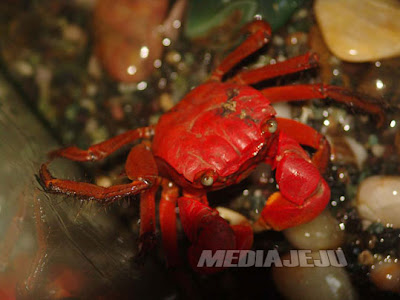
* Image source:
Media Jeju
Sesarma intermedium (붉은발말똥게)
_The 2nd class endangered species-Ministry of Environment, ROK
…………………………………………………………………………………………………

Cladium chinense Nees (층층고랭이)
_A rarity, but non- court-protected
……………………………………………………………………………….

Eriocheir Japonicus (동남참게)_ A rarity, but non- court-protected

 Click to Download: An Independent Environmental Impact Assessment (EIA) of Coral Communities Surrounding the Intended Site of the Gangjeong Naval Base – Including Analysis of Previous Research and Findings
Click to Download: An Independent Environmental Impact Assessment (EIA) of Coral Communities Surrounding the Intended Site of the Gangjeong Naval Base – Including Analysis of Previous Research and Findings










